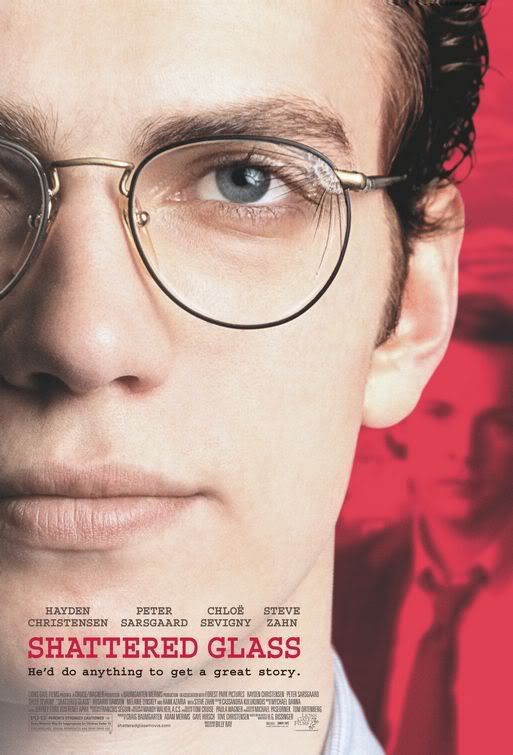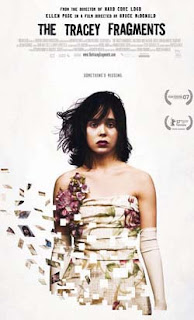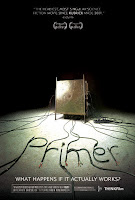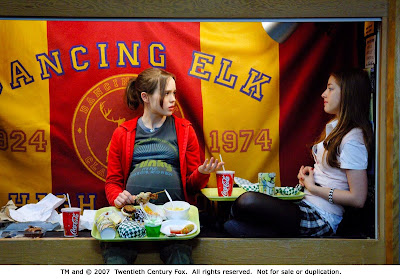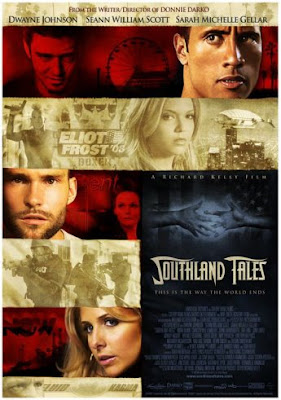 Click Image for Trailer
Click Image for TrailerDavid Gordon Green's most recent film is snow angels and I had got the chance to see this beautiful, yet depressing film at the Downer during it's brief run. I knew little of Gordon Green's work before this film, the other film I saw prior of his was All the Real Girls and I thought it was a really great film. I would say Green's films are very much in the nature of an independent film for two reasons, his subtle and patient stylistic choices, and the choice in content for his films. One way in which I would describe the style of the film is poetic, all of the shots were patient, beautiful, and lingered long enough for the actions of the film to soak into you. The way the shots are lit and colored are very delicate, they are colorful and rich, but always have a bit of a gray undertone, not making them too polished. The way the film is shot lends itself to the content of the film, which hits you like a sledgehammer towards the end of the film and truly shows this films independent status. The film drifts along through parallel stories, and I use the word drift because the story seems to not utilize the traditional arch of a Hollywood film, the film takes it's time. One story is a married couple how are on a separation from one another, but still have a very young daughter that binds them. The other story is of a young High School boy who's parents split up and who starts a budding, yet awkward romance with the new girl in school. The two stories take place in the same nameless town and the characters are intertwined for various reasons. You get a sense of the parallel stories being a reflection of the same relationship, the younger boy and girl, the crush, the first kiss; and the older couple, the fights, alcoholism, a child that binds, an affair, and heartache. So, in many ways this story examines two spectrum's of human romantic relationships. But the content of the film pushes the older couples relationship to an extreme. The female in this relationship is the one that primarily takes of the daughter and the male father is recovering from being unemployed and an alcoholic. The dad is starting to try harder, to be clean, to be a better father, the mother is still not trusting of him, but seems to be on the brink of another chance. But the story takes a sharp u-turn and you see how non-Hollywood of a film Snow Angels is. SPOILER ALERT, this film does not have a happy ending, and if you are planning on seeing the film I wouldn't read further, but if it doesn't matter, here we go. The mother gets a mild cold and one day finds herself sleeping all afternoon, waking up in early evening with her daughter nowhere to be found. The town gets everyone together to the find the daughter, and this is where the parallel stories met at extreme, the high school boy, who you've been following along side the older couples story throughout the film, stumbles across the little girl in a frozen river bank. This pushes the father and mother to the brink. The mother spirals into a depression and refuses to see the father, the father questions everything he knows and believes and torments the mother for killing his daughter. In the end, the father realizes there is only one thing he can do; he gets his shotgun and breaks into the mothers house, waits for her to get home, marches her out in her bare feet to the spot where the daughter was found dead and shoots her in the back of the head and not to far after he kills himself. The ending hits you like a ton of bricks as a viewer. It is an independent film like this that pushes the human actions in a film so far that is forces them to think about what the hell just happened, sure it gets you depressed, but it makes you contemplative, in a very independent film manner, it makes you think. Snow Angels was a beautiful and tragic film which I would recommend to anyone who can bear it.
-Cory Gorman










